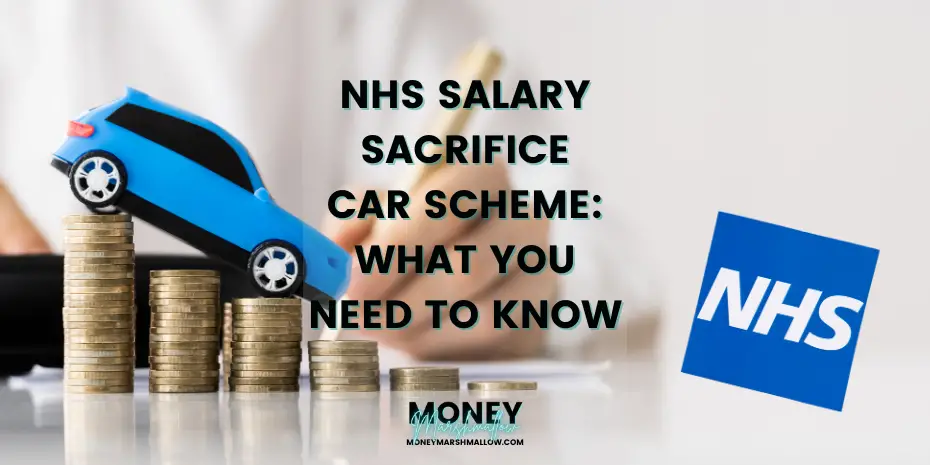Are you an NHS worker considering a new car? The Salary Sacrifice Car Scheme offers an alternative car leasing approach with potential financial benefits for NHS employees. This guide explores the scheme’s mechanics, eligibility requirements, and key considerations like salary reductions and potential impacts on your NHS pension contributions. By understanding the scheme’s intricacies, you can decide whether it aligns with your financial goals and car ownership needs.
NHS Salary Sacrifice Car Scheme: How does it work?
The NHS car scheme allows staff to lease a new car for 2-4 years and have all the costs taken from their pay. No deposit or credit checks are required and staff simply hand back the vehicle at the end of the lease and then decide if they want a new, replacement vehicle. The car scheme can offer a great benefit to staff as a new, reliable car will often help them in their role and for leisure purposes. Maintenance, servicing, breakdown and recovery services are included which will provide for hassle-free motoring.
The NHS Salary Sacrifice Car Scheme operates as a salary sacrifice, where you agree to a reduced pre-tax salary in exchange for a non-cash benefit like a car lease. This reduction lowers your taxable income, potentially resulting in savings on income tax and national insurance contributions. However, keep in mind that it also reduces your pensionable earnings, potentially impacting your future NHS pension benefits (calculated based on your career average earnings during active NHS service within a specific tax year).
Who is eligible for the NHS car scheme?
The NHS car scheme is available to all NHS employees, including both full-time and part-time staff.
However, most NHS Trusts require you to match the following criteria to be eligible to participate in the scheme:
Be 21 years of age or older (additional insurance premium possible for drivers aged 21-25)
Have held a full EU driving licence for a minimum of 12 months
Be in substantive employment and your salary sacrificed must not take you below the national minimum wage (NMW)
Key features of the scheme
- Lease duration: Leases are typically between 2-4 years, with fixed monthly payments throughout the term.
- Maintenance included: The cost of servicing, maintenance, road tax and breakdown cover are included in the monthly charge.
- Insurance included: All vehicles are insured under your Trust’s policy. This is fully comprehensive and covers the vehicle to be driven by any driver of all ages and for business miles, offering convenience and peace of mind.
- Mileage allowance: Be mindful of mileage limitations, as exceeding them may incur additional charges.
- Tax implications: Remember, the reduced pre-tax salary affects your tax benefits and pension contributions. The value of the car you choose will also influence these calculations.
Joining the scheme
The application process generally involves:
- Checking eligibility: Confirm your eligibility with your NHS trust or directly contact one of the NHS fleet solutions.
- Browsing car options: Select a car from the NHS fleet services’ available vehicles, often covering various manufacturers, models and types such as electric vehicles.
- Applying: Provide the necessary details and choose your desired lease term and mileage allowance.
- Credit checks: While credit checks are usually not required, some providers may conduct them.
- Approval and delivery: Upon approval, your chosen car will be delivered, and your salary sacrifice deductions will begin with your monthly payments.
Important Note: This information is for general understanding only. Specific details and eligibility criteria may vary depending on your NHS trust and chosen provider. Always consult with them for the most accurate and up-to-date information before making any decisions.

NHS Car Scheme: Pros and cons
The NHS Car Lease Scheme boasts potential benefits, but like any good decision, it’s crucial to understand the drawbacks before signing on the dotted line. Let’s explore the crucial considerations:
Pros
- Potential tax savings: Reduced pre-tax salary can translate to lower income tax and national insurance contributions, depending on your tax bracket.
- Convenient and predictable costs: Fixed monthly payments simplify budgeting and cover maintenance and insurance in some cases.
- Brand new car: Drive a new, reliable vehicle without the upfront costs of traditional ownership.
- Fuel-efficient options: Many schemes offer eco-friendly car choices, potentially lowering fuel costs and your environmental impact.
Cons
- Reduced pension contributions: Lower pre-tax salary means less goes towards your NHS pension scheme, potentially impacting future benefits. Carefully evaluate the potential long-term implications on your retirement income.
- Mileage restrictions and fees: Exceeding your chosen mileage limit incurs additional charges.
- Early termination fees: Leaving the scheme early might involve expensive early repayment penalties.
- Commitment and flexibility: You’re locked into the lease term, limiting flexibility if your circumstances change.
- Annual allowance charge for high earners: If your adjusted income exceeds the annual allowance, you might face an additional tax charge, negating some benefits.
- Reduced mortgage affordability: The lower pre-tax salary directly impacts your mortgage affordability calculations. Mortgage lenders typically assess your borrowing capacity based on your income and outgoings. A reduced income due to the car lease scheme might limit the amount you can borrow or make obtaining a mortgage or remortgage more challenging.
Additional costs
While the NHS Car Lease Scheme could save you some money compared to private leasing, here are a few additional costs worth considering when budgeting for your car:
- Fuel: This is one of the most crucial expenses not covered by the car benefit scheme. You’ll need to budget for fuel based on your driving habits and the chosen car’s fuel efficiency.
- Annual allowance charge (high earners): If your adjusted income exceeds the annual allowance, you might face an additional tax charge, negating some of the initial benefits.
- Early termination fees: Leaving the scheme early might involve expensive penalties for breaking the lease agreement. Carefully consider the commitment before joining.
- Additional car features: Upgrades or optional extras like sat nav, sunroof, or alloy wheels often require additional costs. Naturally, a high-end car would also come with higher cost.
- Personal insurance: While some schemes include breakdown cover, they might not cover personal accidents or other types of insurance, requiring an additional insurance premium. Check the details carefully.
- Parking permits and tolls: Any parking permits or tolls incurred during your driving are your responsibility.
- Cleaning and maintenance: While routine maintenance might be included, additional cleaning or cosmetic repairs often fall on you.
- Replacement parts: If certain parts need replacement due to wear and tear beyond normal usage, you might be responsible for the cost.
Is it cheaper to get a car through salary sacrifice?
There’s no definitive answer to whether salary sacrifice is cheaper or a good deal. It depends on your circumstances and priorities. Carefully assess the potential pros and cons, consider seeking personalised advice from a financial advisor, and factor in all relevant costs before making a decision.
Remember, even though the monthly payments might appear lower due to the pre-tax deduction, it’s essential to remember that you’re essentially paying the same amount over the lease term, just spread out differently. The key is to compare the total costs of both options, including tax implications, fuel, maintenance, and any additional fees, to determine which fits your financial situation better.
British Medical Association’s guide and cost tool can help you calculate the total cost and understand whether the lease car scheme is good value in your circumstances.
Alternatives to the NHS car scheme
While the NHS salary sacrifice scheme for a new car offers convenience, it’s not the one-size-fits-all solution. Exploring alternatives ensures you get the best fit for your budget and needs. Here’s a quick overview:
Owning a car:
- Buying used: Buying a used car is often the most budget-friendly option, especially with manageable maintenance and a lower upfront investment compared to new cars. Enjoy ownership flexibility and customisation freedom, but remember ongoing maintenance costs and potentially higher insurance premiums.
- Buying new: Experience the benefits of a brand-new car with the latest technology and potentially lower maintenance costs in the initial years. However, prepare for significant upfront expenses, depreciation that reduces your car’s value, and higher insurance premiums.
Alternative leasing:
- Personal Contract Hire (PCH): Offers flexible mileage options but potentially higher monthly payments compared to the NHS salary sacrifice system. Remember, you don’t own the car at the end.
- Contract purchase: Allows ownership at the end of the lease term, but requires a final balloon payment.
Conclusion: Is It worth getting an NHS lease car?
Whether or not to lease a car through the NHS Car Leasing Scheme depends on your individual circumstances. For some NHS workers, leasing a car through the scheme may be a cost-effective and convenient option, while for others, it may not be the best choice.
Remember:
- The scheme is essentially a long-term rental, not ownership. At the end of the lease, you return the car and don’t build equity. This might not be financially advantageous in the long run compared to traditional ownership, especially if you plan to keep the car for an extended period.
- Reduced pre-tax salary means lower pension contributions. Carefully evaluate the impact on your future retirement income as this can have significant long-term consequences.
- Thoroughly assess all costs. Factor in fuel, potential mileage overage fees, early termination penalties, and the potential for an additional tax charge if your adjusted income exceeds the annual allowance. Seek professional financial advice if unsure about potential tax implications.
- Higher tax bracket considerations: If your income already falls within the higher tax bracket, the benefit of reduced pre-tax salary might be significantly negated by the additional tax you’ll pay on the car’s value. Consult a financial advisor for personalised guidance in this scenario.
Ultimately, the decision rests with you. By understanding the key factors, you can make an informed choice that aligns with your financial well-being and overall needs. Remember, the ideal car solution isn’t always the most convenient one, but the one that fits best with your long-term financial goals and driving habits.

This article may contain affiliate links. If you sign up through these links, we may earn a small commission at no extra cost to you, supporting our content creation.
